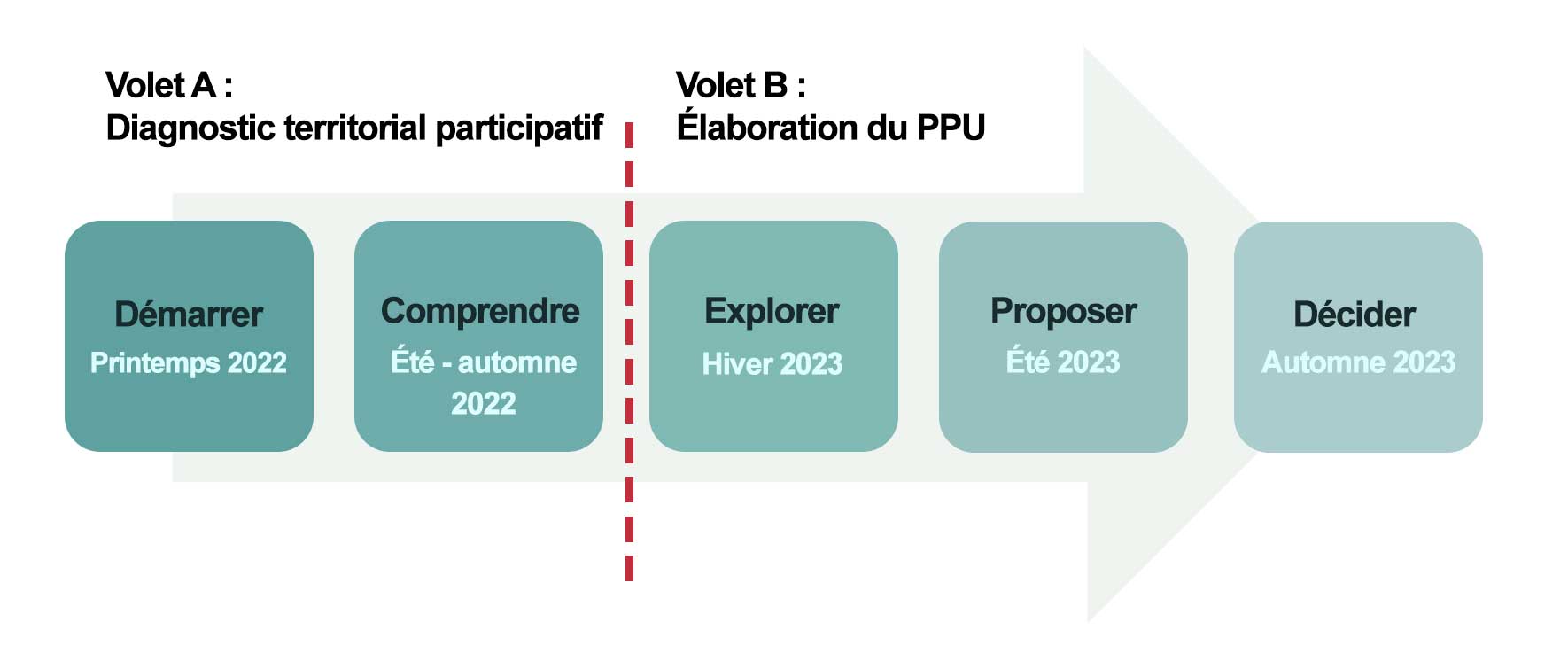
“Densification does not mean obeying any developer’s logic. We have local shops, a village heart, a history, traces.”[1]
Introduction
The current process for the implementation of a specific urban plan (PPU) for Vieux-Aylmer offers the City of Gatineau an exceptional opportunity to update and improve the urban planning and heritage protection rules in the historic heart of the Aylmer sector. The Aylmer Heritage Association (APA) believes that changes to the Aylmer Heritage Site Bylaw (no. 2100-97) and planning standards are needed to ensure more effective protection of the heritage area while promoting respectful, sustainable and environmentally friendly development.
The APA also believes that municipal authorities should make more optimal use of existing powers and standards.
This analysis focuses on the most important components of the legislative and regulatory package that relate to or have a direct impact on heritage in Old Aylmer. It makes a series of specific recommendations.
1. REVISION AND UPDATING OF THE AYLMER HERITAGE SITE BY-LAW
The Aylmer Heritage Site Bylaw cited the Aylmer Heritage Site to preserve and enhance the outstanding historical and architectural features of this founding place. The following is a description of the site from the Répertoire du patrimoine culturel du Québec:
The Aylmer heritage site is an urban sector with more than 80 buildings. It is composed of large middle-class residences, more modest homes, businesses as well as institutional and religious buildings, built in the 19th and 20th centuries. Its irregular perimeter is elongated and includes the buildings on either side of rue Principale as well as those along sections of the cross streets between boulevard Wilfrid-Lavigne and rue Bordeaux to the east and the Ottawa River to the west. The site includes an urban park and various landscaping features. It is located in the Aylmer sector of the City of Gatineau.
The property is designated as a heritage site. The protection applies to the grounds and the exterior envelope of the buildings on the site. The perimeter of the site includes one classified heritage building, the Charles Symes Inn, and several designated heritage buildings.
We have identified two priority areas of work: (i) the revision of the perimeter of application of the By-law and (ii) the clarification and reinforcement of heritage protection standards.
Recommendation 1.1: Revise the boundary of the by-law to include areas adjacent to or set back from Principale Street
The delimitation of the area covered by the By-law is now outdated in view of the evolution of knowledge and the increased appreciation by the community of built heritage as a key element of collective identity, quality of life and sustainable development.
Today, citizens expect more rigor and audacity in the safeguarding of the heritage sector.
Thus, the perimeter of application of the bylaw must be expanded in a selective and balanced manner to extend the protection it provides to areas adjacent to or set back from Principale Street when these areas include significant heritage building complexes.
Some areas left out by the current version of the by-law are indeed worthy of protection. It is not intended to be an exhaustive list, but these include areas on Heritage Street (notably the group of matchboxes along the Ottawa River), Symmes Street, Broad Street and Brook Street.
Recommendation 1.2: Clarify and strengthen protective standards to ensure the heritage integration of new buildings and alterations to existing buildings, and the conservation and rehabilitation of built heritage.
Current standards are often unclear or incomplete.
– Heritage integration standards
In its current version, the bylaw is ambiguous as to its scope in terms of heritage integration, particularly with regard to the insertion of new buildings. Indeed, while article 1.8 explicitly states that the bylaw is aimed at the erection of a building, articles 4 and 5, which concretely frame the interventions, seem to concern only existing constructions.
The bylaw should therefore be amended to state more clearly that it governs the insertion of new buildings.
Moreover, s. 4 and 5 are also ambiguous as to the integration standards that apply.
Section 4.1 of the by-law states
Any building located in a heritage site is protected and is subject to the provisions for the protection of the heritage character set out in the heritage SPAIP by-law.
Section 5 requires compliance with the provisions of “the Site Planning and Architectural Integration Program Regulation”. However, a “heritage SPAIP” (s. 4) is not synonymous with a SPAIP.
However, the existing SPAI by-law in the area does not provide for a “heritage SPAI” in the true sense of the word. The general architectural integration standards are not standards that explicitly and systematically address the protection of the heritage integrity of the specific area covered by the heritage site by-law.
The regulations will have to be modified to require “heritage PIIAs” to ensure that modifications to existing buildings and the insertion of new buildings respect precise and specific heritage integration standards specific to the protected site and not simply the general rules currently in force. Experts in heritage integration will need to be engaged to develop specialized standards and to ensure compliance.
In addition, municipal authorities must make use of the tools available to them under the Act to require compliance of all projects with heritage conservation and enhancement. In this regard, section 138 of the Cultural Heritage Act reads as follows
Every person must comply with the conditions relating to the conservation of the heritage values of a heritage site to which the council may subject him or her and which are in addition to the municipal by-law, in particular the by-law adopted under section 150, when in a heritage site
(1) it erects a new structure
(2) modifies the layout and location of an immovable, repairs it or modifies its exterior appearance in any way
(3) excavates the ground, even inside a building, unless the purpose of the excavation is to dig for a burial or exhumation without any of the acts mentioned in paragraphs 1 and 2 being performed
(4) it makes a new sign or alters, replaces or demolishes a sign or billboard.
– Maintenance of built heritage
Section 5.1.1 of the bylaw states that “all buildings located in the heritage site must be maintained in good condition.” This wording is too vague as it does not specify what is meant by “good condition”. It should be clarified that the maintenance requirement is to keep all the heritage features of the building intact over the long term by preventing structural or other deterioration of the building. It is important to distinguish in explicit terms between heritage requirements and safety or health requirements.
It is true that section 136 of the Cultural Heritage Act already states that “(e)very owner of a listed heritage property shall take the necessary measures to ensure the preservation of the heritage value of that property”. However, the City should incorporate this standard into its regulatory framework, which will facilitate direct intervention on the ground.
The by-law must also provide for preventive and remedial measures that may be imposed on an owner or occupant who degrades or allows the degradation of a heritage building.
This updating process is an opportunity to harmonize the heritage regulations with the regulations relating to urban planning in the wake of the recent amendments to the Act respecting land use planning and development (Ch. A-19.1). This is discussed below.
2. REVIEW OF PLANNING STANDARDS
The current inconsistency or ambivalence of the regulations is an obstacle to an integrated approach to heritage protection and enhancement. Both developers and City planning officials find that current planning standards are inconsistent with the preservation and enhancement of heritage.
Recommendation 2.1: Consolidate the gains on building heights
During the concordance process, the elected officials of the City of Gatineau exercised their discretion, clearly recognized in the development plan, to re-establish the historic three-storey limit in the heritage district. This change was in response to the request of the community associations.
Therefore, there can be no question of reversing this important achievement. The inconsistency of the regulations that had the city committing itself under the Cultural Heritage Act to enhance and protect the heritage site because of its historical and architectural interest, while at the same time putting in place zoning rules that favoured real estate projects that destroyed the heritage integrity of the sector, is to be commended.
Recommendation 2.2: Ensure the heritage integration of SMCPPs in Old Aylmer
The Act respecting land use planning and development authorizes the City of Gatineau to “delimit any part of the territory of the municipality where a particular project may be authorized”. It also allows the City to “define categories of specific projects and provide for different rules for different categories, parts of the territory or combinations of a category and a part” (s. 145.37).
It is incumbent upon the city to review the SDCPP bylaw to better protect Aylmer’s heritage. The city should amend the bylaw to provide that, in Old Aylmer, specific rules will apply to exclude projects that exceed the height provided for in the zoning bylaw, projects that would affect the integrity of a heritage landscape, or whose siting, massing and volumetry would be contrary to the enhancement of heritage.
Recommendation 2.3: Prevent Subdivisions Harmful to Heritage
A subdivision can dismember a site of great heritage value. Regulations should be amended to prevent subdivisions that would have this effect. It should also be remembered that subdivisions are governed by the CPA, s. 141 of which reads as follows
No person shall, without the permission of the council of the municipality that passed the by-law
(2) divide, subdivide or fragment an immovable situated in a cited heritage site.
….
Before deciding on an application for authorization, the council shall seek the advice of the local heritage council.
Any person who does any act described in the first paragraph must comply with any conditions that the council may determine in its authorization.
The authorization of the council of the municipality shall be withdrawn if the project in respect of which an application is made under this section is not commenced within one year after the authorization is issued or if the project is interrupted for more than one year….[2]
Recommendation 2.4: Implement Heritage SPAs
As mentioned earlier, the Heritage Site By-law refers to a “heritage SPAIP” which is not provided for in any existing by-law. Indeed, the current PIIA bylaw applicable to Old Aylmer does not systematically and rigorously set out specific heritage objectives and evaluation criteria.
The SPAIP bylaw should therefore be reviewed, in harmony with the Heritage Site By-law, to ensure the optimal heritage integration of any project involving a building located on the heritage site. However, this regulation should not be limited to the heritage site but should be extended to the whole of Old Aylmer.
The objectives and criteria of heritage integration should have a preponderant status in the analysis of projects so that their non-respect will lead to the modification or rejection of a project.
Recommendation 2.5: Better protect built heritage through the development and enforcement of building maintenance standards
One author has shown the disastrous consequences of the strategy of some developers to allow heritage buildings to fall into disrepair so that they can then be allowed to demolish them.[3]
. Maintenance of heritage buildings
The Act respecting land use planning and development was recently amended to oblige municipalities to better safeguard built heritage. Thus, according to s. 148.41, “Every municipality is required to maintain in force a by-law relating to the occupancy and maintenance of buildings, which must contain standards aimed at (1) prevent the decay of buildings; and (2) protect buildings from the weather and preserve their structural integrity.” The by-law must protect heritage buildings (148.41(2))[4]. It may “define classes of buildings and provide for different rules for different classes, parts of territory or combinations of such classes and parts.
The city therefore has the power to adapt its maintenance by-law to the category of heritage buildings in a part of the territory such as Old Aylmer. Everything is in place for the development of a by-law for the protection of heritage buildings in Old Aylmer imposing specific and rigorous standards in order to put an end to the current neglect of emblematic heritage buildings, such as 10 rue Principale, which are left to be abandoned by their owners. Maintenance standards should be established to ensure that the building’s heritage features are maintained.
Recommendation 2.6: Make the demolition of heritage buildings an exceptional measure of last resort and require expert heritage advice to authorize it.
The new provisions of the Act respecting land use planning and development include specific protective provisions for heritage buildings. For example, the demolition by-law must specifically:
(4) determine criteria for the evaluation of an application for authorization for a heritage immovable, including the history of the immovable, its contribution to local history, its degree of authenticity and integrity, its representation of a particular architectural trend and its contribution to a group to be preserved. (s. 148.0.2)
In addition, the municipality may “(1) require that, prior to the study of the application for authorization, the owner submit to the committee an expert report, including a heritage study…” (s. 148.0.2.1.) Such a study may be requested after the preliminary study of the application.
The City of Gatineau has adopted By-law number 900-2021 to regulate the demolition of buildings on the territory of the City of Gatineau, and section 22 (9) of this By-law essentially simply repeats the criteria set out in the Act as a guide. It would have been possible to make more vigorous and visionary use of the city’s new powers by specifying that, in applying the by-law, the competent committee must take into account the fact that the public interest requires that, when a request is made to demolish a building of heritage interest, the demolition be authorized only in exceptional cases where it is demonstrated, on the advice of professionals specializing in heritage, whose services will be retained by the City of Gatineau, that the building, or a significant part of it, cannot be saved.
In other words, our by-law should explicitly state that the first principle is preservation and the exception is destruction. This approach would be consistent with the commitment to protect and enhance the heritage of Old Aylmer formulated in the Schéma d’aménagement and the Plan d’urbanisme.
Conclusion
The protection of built heritage is an imperative for sustainable development as recognized by the Quebec Commissioner for Sustainable Development in his 2020-2021 report.
The work aimed at implementing a PPU for Vieux-Aylmer is therefore a historic opportunity for the City of Gatineau to open a new era in the conservation and enhancement of the heritage of this unique sector. The City cannot afford to let this opportunity pass. It is perfectly possible to reconcile proportionate densification with the enhancement of the heritage that gives meaning and anchorage to our community.
Prepared by Ghislain Otis for the Aylmer Heritage Association
[1] Nadine Viau, mairesse de Beloeil citée dans Jean-François Nadeau, «La mairesse de Beloeil à la défense du beau », Le Devoir du 26 août 2022, à la p. A-5
[2] Voir aussi l’art. 204 disposant que « Une division, une subdivision ou le morcellement d’un immeuble fait à l’encontre de l’article 141 est annulable. Tout intéressé, y compris la municipalité sur le territoire de laquelle l’immeuble est situé, peut s’adresser à la Cour supérieure pour faire prononcer cette nullité. » Des pénalités sont aussi prévues à l’art. 205 de la loi.
[3] Marie-Hélène Voyer, L’habitude des ruines, le sacre de l’oubli et de la laideur au Québec, Lux, 2021
[4] Aux termes de l’art. 148.01 de la loi, on entend par «immeuble patrimonial» : « un immeuble cité conformément à la Loi sur le patrimoine culturel (chapitre P-9.002), situé dans un site patrimonial cité conformément à cette loi ou inscrit dans un inventaire visé au premier alinéa de l’article 120 de cette loi ».

